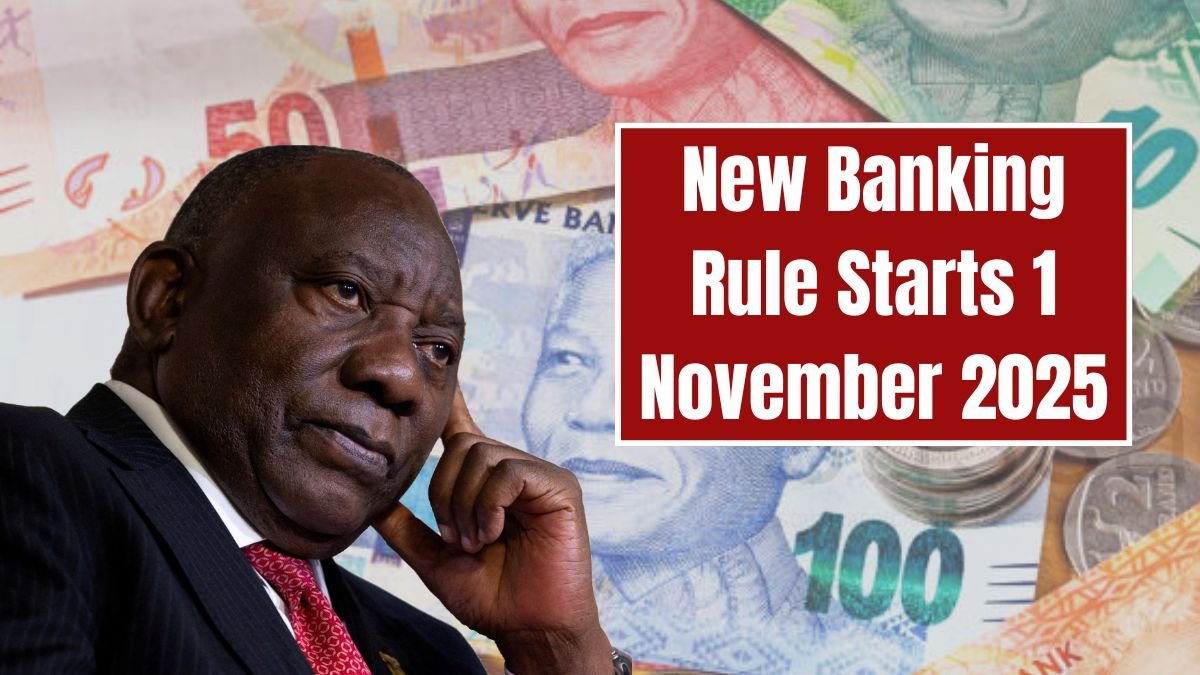The day is November 1, 2025, and the new banking regulations in South Africa have finally arrived, ushering in a new era for the Reserve Bank and the National Treasury. The transformation focuses mainly on banking fee structures, electronic payments, and the overall financial system, making it more transparent, cutting costs for customers, and speeding up the banking process.
New Regulation Outline
The law will soon limit cash withdrawals for the five major banks in South Africa, commonly referred to as Nedbank, FNB, Capitec, Absa, and Standard Bank, and by their initials. The new rule will not only place a limit on cash withdrawals for a day but also for major transactions, and there will be a uniform ATM fee across banks that will allow customers to easily predict their costs. SARB is also asserting that apart from the cash withdrawal limitation, this is part of the National Payment Modernisation Project which aims to turn the country into a cashless one. The project seeks to enhance the security and transparency of financial transactions and at the same time ensure low-income users do not face expensive banking fees.
Clarification on Cash Withdrawal Limits
The new provision carries a clear statement that cash withdrawal limits would vary according to different account types and bank’s reputation, in fact, the new regulation has the provision coming to this conclusion. Personal Accounts: The maximum daily withdrawal through the ATMs is capped at R5,000. Business Accounts: Daily withdrawal limit will be anywhere from R10,000 to R25,000 depending on the business nature classification. Basic & Student Accounts: Daily ATM cash withdrawals are now limited to R2,000 which is also the only cash dispensing method allowed in order to lead to the digital lifestyle promotion. The restrictions apply to all banks’ ATMs, retail cash withdrawal points, and interbank transactions. In case an account holder requests a withdrawal amount that is above the limit, he/she will be notified and the specific transactions might be temporarily frozen until the next day.
New Fee Structures for ATM Transactions
Through the revise structure of ATM fees, three common fee bands across the banks will be set – aimed at disclosing the hidden costs.
- Tier 1 (R0 – R1,000): The maximum withdrawal fee will be a fixed charge of R6 across the banks.
- Tier 2 (R1,001 – R3,000): Fees ranging from R7 to R12 will be imposed by banks according to their charges.
- Tier 3 (Above R3,000): An extremely low percentage fee (0.3% – 0.5%) will be imposed which is the replacement of the previous pricing volatility model. Transferring money between banks will, therefore, automatically incur a standard R10 extra fee which is lower than the previous R12- R15 range thus, using different banks is going to be less expensive.
Impact on Card and ATM Usage
Most South Africans feel that the banks’ actions have transformed their banking services into ones that are simpler to interpret, fairer, and at the same time, uniformly priced. The restriction on cash withdrawal seems to have driven the people unconsciously or to a certain degree to do their transactions through digital means like EFTs, QR payments, and mobile banking apps rather than using cash. Nevertheless, in the case of cash dependent ones like small traders, pensioners receiving their pensions in cash, etc, it will indeed take some more time for them to plan their withdrawals in such a manner that the daily limit will not be exceeded and thus they will eventually use the banks’ digitization of the onboarding and merchant acceptance to the daily limit so that the process doesn’t become painful for the customers.
Next Steps for Customers
- Check Your Account Limits: Learn your new daily and monthly withdrawal limits by checking your bank’s mobile app or visiting a branch.
- Welcome Digital Payments: Begin using mobile banking, e-wallets, and QR codes for small amounts of money so that cash will not be your only option.
- Monitor Fees Regularly: Ask your bank for the most recent price list and do a comparison to get a clearer picture of the new cost structure.
- Cash Withdrawals Planning: If you are still dealing with huge cash regularly, consider switching to a business account or going for cashless options.
also read : South Africa Bond Relief 2025: R1,800 Monthly Support Starts in October — Who Qualifies?
